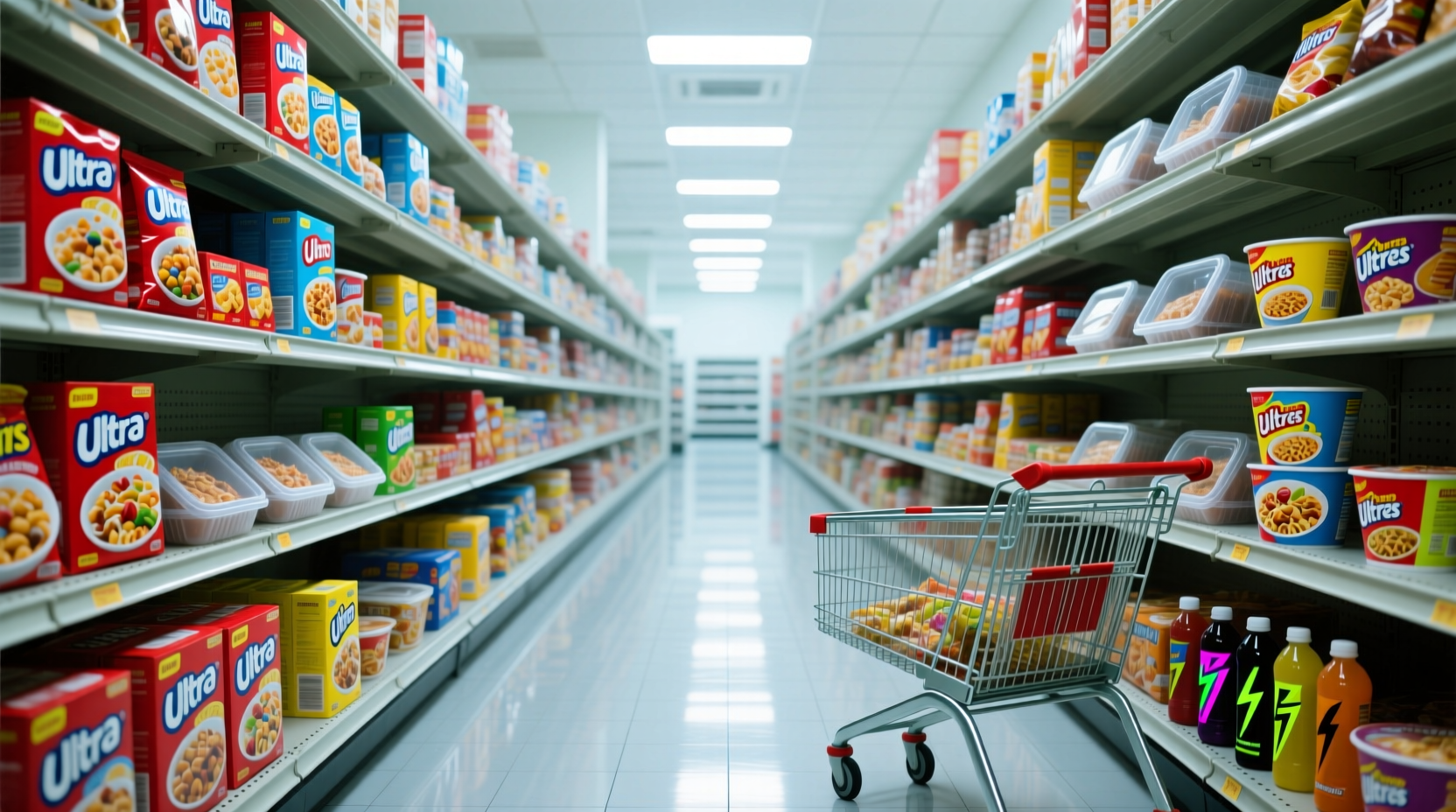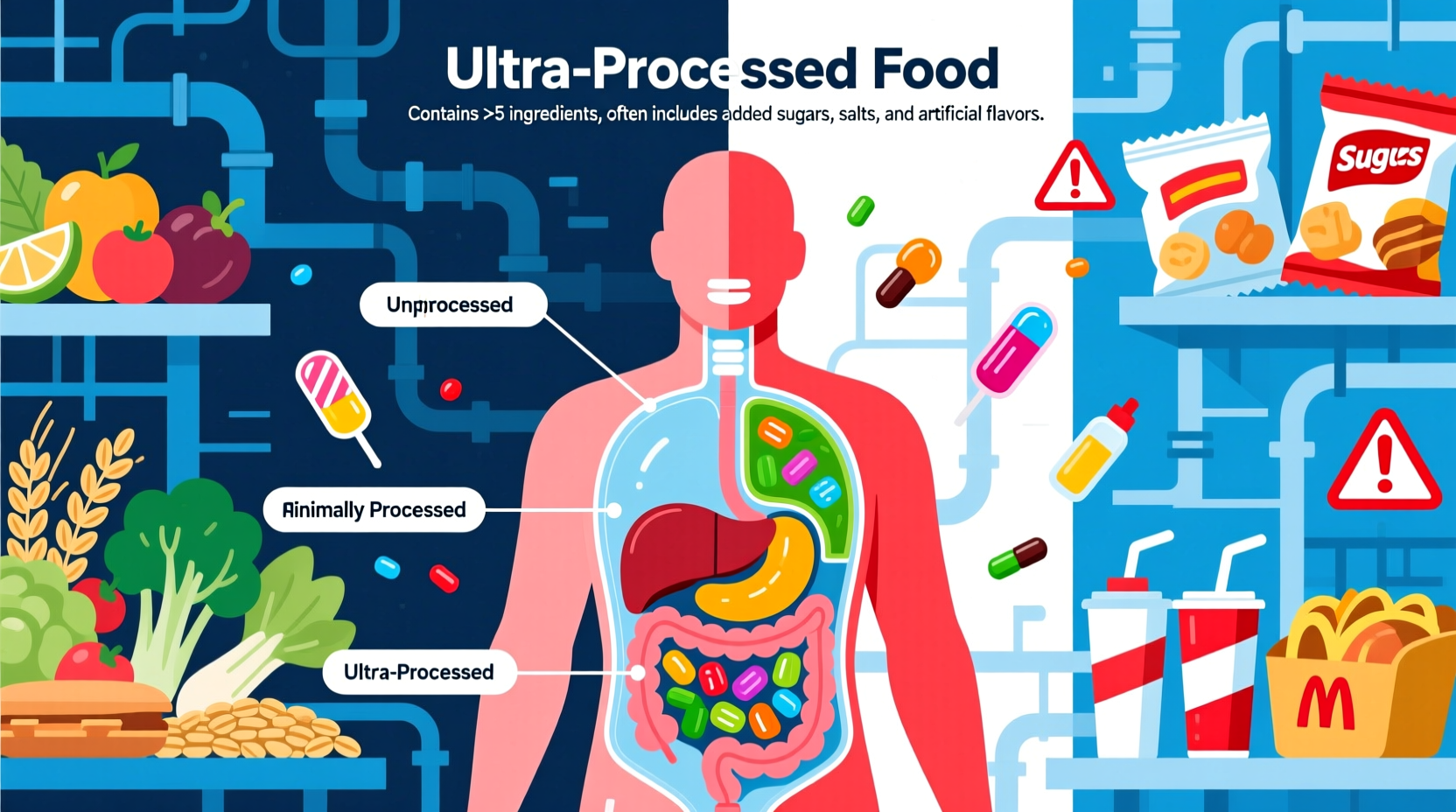Ultra-processed foods are industrial formulations typically containing five or more ingredients, including additives not commonly used in home cooking like emulsifiers, colors, flavors, and sweeteners. According to the NOVA food classification system, these products undergo multiple industrial processes and have minimal whole food content, distinguishing them from basic processed ingredients like cheese or canned vegetables.
Understanding what qualifies as ultra-processed food is crucial for making informed dietary choices in today's food landscape. If you've ever wondered why certain packaged foods might impact your health differently than others, you're not alone. This guide delivers clear, science-backed information to help you identify these products and understand their role in modern diets.
What Exactly Defines Ultra-Processed Food?
When you search for what is ultra processed food, you need more than dictionary definitions—you need practical knowledge you can apply at the grocery store. Ultra-processed foods represent the most heavily modified category in the NOVA food classification system, which researchers at the University of São Paulo developed to categorize foods by their degree of processing.
Unlike minimally processed foods (like fresh produce) or culinary-processed ingredients (like olive oil or cheese), ultra-processed products contain substances rarely found in home kitchens. These include:
- Industrial additives (emulsifiers, thickeners, artificial colors)
- Hydrolyzed proteins
- Modified starches
- Non-sugar sweeteners
- Flavor enhancers
| NOVA Classification Level | Processing Description | Common Examples |
|---|---|---|
| 1: Unprocessed/Minimally Processed | Natural foods with no added substances | Fresh fruits, vegetables, eggs, milk |
| 2: Culinary Processed Ingredients | Substances extracted from whole foods | Salt, sugar, honey, olive oil |
| 3: Processed Foods | Simple combinations of Group 1 and 2 foods | Canned vegetables, cheese, freshly made bread |
| 4: Ultra-Processed Foods | Industrial formulations with multiple additives | Soda, packaged snacks, instant noodles, frozen meals |
How Ultra-Processed Foods Became Dominant: A Timeline
The rise of ultra-processed foods isn't accidental—it follows a clear historical trajectory driven by industrial innovation and changing lifestyles. Understanding this evolution helps explain why these products now dominate supermarket shelves:
- 1950s-1960s: Post-war food technology boom introduces convenience products like TV dinners and instant beverages
- 1970s-1980s: High-fructose corn syrup adoption transforms soft drink and snack manufacturing
- 1990s-2000s: "Functional foods" emerge with added vitamins, probiotics, and other health claims
- 2010s-present: Clean label movement prompts reformulation while maintaining ultra-processed status

Spotting Ultra-Processed Foods: Practical Identification Guide
Learning how to identify ultra processed foods in your daily life requires attention to specific indicators. Here's what to look for when evaluating products:
Ingredient List Red Flags
Examine the ingredient list for these common ultra-processed food markers:
- More than 5 ingredients
- Substances you wouldn't use in home cooking (maltodextrin, xanthan gum, disodium inosinate)
- Multiple forms of sugar (high-fructose corn syrup, cane sugar, maltose)
- Artificial colors (Red 40, Yellow 5)
- Preservatives (sodium benzoate, BHT)
Manufacturing Process Clues
Consider how the product was made:
- Does it contain ingredients created through chemical processes? (hydrolyzed vegetable protein)
- Was it assembled using industrial techniques not replicable at home? (extrusion, hydrogenation)
- Does it contain non-culinary additives for texture or appearance? (carrageenan, cellulose gel)
Research Insights: What Science Says About Health Impacts
Multiple studies published in reputable journals have examined the relationship between ultra-processed food consumption and health outcomes. A landmark 2019 study published in The BMJ followed over 100,000 adults and found that a 10% increase in ultra-processed food consumption correlated with a 12% higher risk of cardiovascular disease.
Research from the National Institutes of Health demonstrated that people consuming ultra-processed diets ate approximately 500 more calories per day compared to those eating unprocessed diets, leading to weight gain. This suggests ultra-processed foods may disrupt natural hunger and satiety signals.
Actionable Steps: Reducing Ultra-Processed Foods
Transitioning away from ultra-processed foods doesn't require perfection—small, sustainable changes make the biggest difference. Try these practical approaches:
Start with Strategic Swaps
Replace one ultra-processed item at a time with minimally processed alternatives:
- Swap sugary breakfast cereal for plain oats with fresh fruit
- Choose plain yogurt with added nuts instead of flavored varieties
- Replace packaged snacks with homemade trail mix
- Opt for freshly prepared meals over frozen convenience options
Master the Art of Reading Labels
When evaluating products, focus on these key questions:
- Could I make this at home with these ingredients? (If not, it's likely ultra-processed)
- Does it contain additives I wouldn't use in cooking?
- Is the ingredient list dominated by recognizable whole foods?
Common Misconceptions About Processed Foods
Many people confuse processed food vs ultra processed food, creating unnecessary dietary restrictions. Not all processed foods are problematic—fermented foods like yogurt and sauerkraut offer health benefits, while canned tomatoes provide valuable nutrients in convenient form.
The key distinction lies in the degree of processing and the presence of industrial additives. Understanding this difference prevents overly restrictive eating patterns while still addressing genuine health concerns associated with ultra-processed products.
Building Sustainable Eating Habits
Creating lasting change involves more than just identifying ultra-processed foods—it requires developing practical strategies that fit your lifestyle. Consider these approaches:
- Batch cook whole food ingredients for easy assembly meals
- Keep frozen vegetables and canned beans on hand for quick preparation
- Plan one convenience meal per week to avoid burnout
- Involve family members in meal preparation to build positive associations
Understanding Food Environment Challenges
Reducing ultra-processed food consumption isn't just about personal choice—it's influenced by complex factors including food accessibility, time constraints, and marketing exposure. Recognizing these challenges helps create realistic expectations for dietary changes.
When what is ultra processed food becomes part of your awareness, you gain power to navigate these challenges more effectively. Start with small, manageable changes rather than attempting complete dietary overhaul.











 浙公网安备
33010002000092号
浙公网安备
33010002000092号 浙B2-20120091-4
浙B2-20120091-4